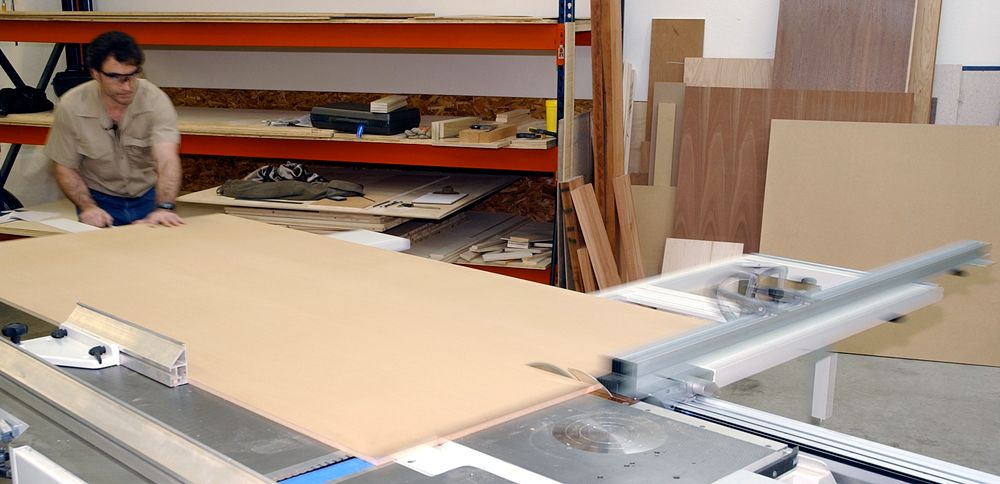Okay, I worked in the trades. I saved my pennies for a very long time and bought a half-swing format (5 foot slide) sliding table saw. I always liked how they 10 footers worked but of course don't have that much room in my personal shop. I tried to adapt my own cabinet saws to have the same functionality, until I bought one for myself.
I bought my new saw with an outrigger table and swing arm. Of course there is a 3 month lead time for one of these custom saws, built to the order. Shipped via container from Europe...Well the customer before me was not ready for receiving (thinking he didn't have the money ready( and mine was paid upfront... so they shipped my saw, with a staggered shipment of the accessories.
That's the background. To make a long story real short, they had a clearance problem with the swing arm and told me they were going to cut the swing arm shorter to clear. Since I also do welding fabrication, I told them I didn't care if mine was too long, I could make it work. I told them repeatedly, that my main concern was that The saws of that type (10 footers) I've used you could move the outrigger to any spot on the slider and use it, that my main concern with cutting the length of the swing arm was that it still needed to be long enough to use the outrigger at the front of the sliding table. They assured me that there was still plenty of length there for that.
Shipped and received. Was missing pieces/hardware to mount the swing arm to the saw, the outrigger to the slider and to use the crosscut fence to the outrigger table. I went out and bought my own hardware to mount the swing arm to the saw frame. Problem Houstin- with the slider against the front stops, the oturigger on stands where it would be at the forward position on the slider (remember, missing hardware), the swing arm extended to full extension, it is 12-1/2" shy in length for that to work...
Their techs are now saying I "have the outrigger on the wrong end" of the slider. Remember I have experience with other European saws with outrigger tables... (Altendorf, Martin, Felder, SCMi, Watkins...) and my experience "was" that an outrigger should be able to move to any position on the slider, work put to the front or rear of the crosscut fence depending on workpiece and what you need to do...
AM I wrong? Seems to me, that this outrigger is crippled in function (by 50%) by the now limited length/travel of their swing arm. The outrigger has the 2 pivot points and angle scales to mount the crosscut fence to the front and back of the outrigger table....




 Reply With Quote
Reply With Quote







